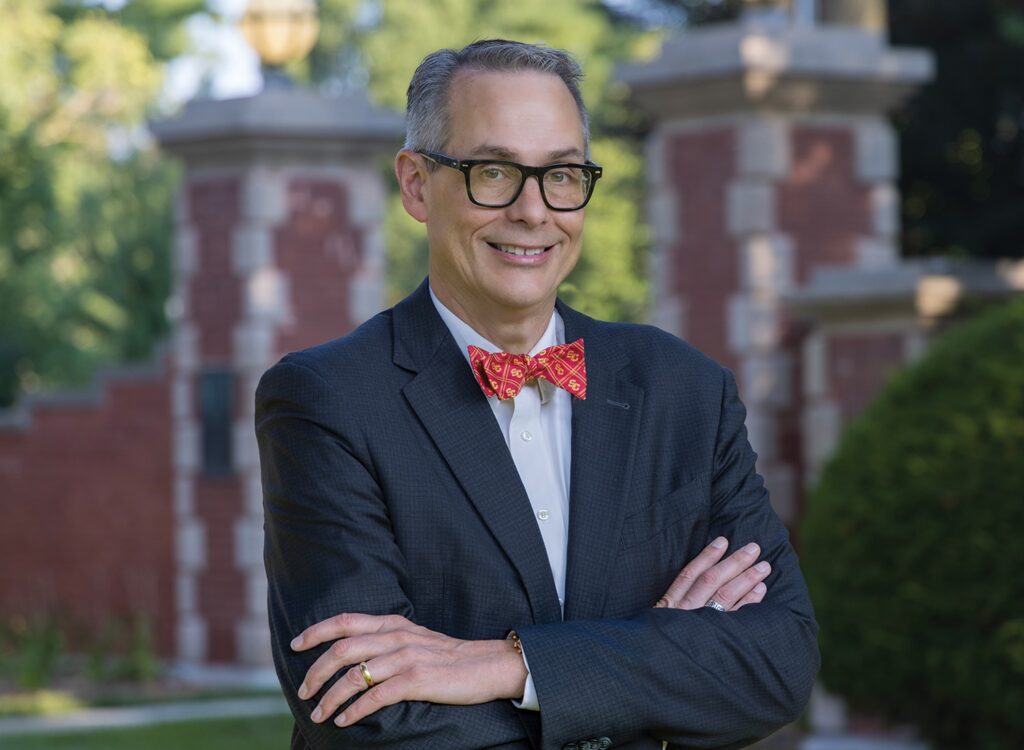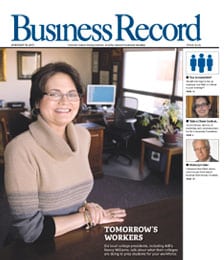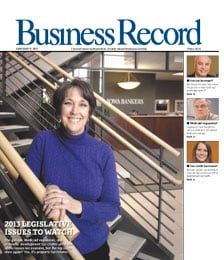Nursing homes innovate to grab growing business

Part of the joy of living at home is that you get to wake up when you want, eat what you want and decorate your space as you see fit.
Today, those kinds of comforts are spreading to places once governed by tight schedules and strict rules – nursing homes.
“What is happening today in our industry is nothing less than a complete cultural change,” said Terry Penniman, CEO and administrator of Scottish Rite Park, a retirement community in Des Moines. “We are giving as many choices back to the residents as we can.”
The graying of America is a well-known trend, and with the Baby Boomer generation fast approaching retirement, experts say these new approaches are how nursing homes are competing for residents.
“The nursing home as most people know it is dying,” said Rob Kretzinger, president and CEO of Wesley Retirement Services, a not-for-profit organization based in Johnston. “The future will be places that cater to each stage of life after you retire, from independent living to around-the-clock care.”
Penniman said at traditional nursing homes, if a couple goes in together and one of them needs more care, they would have to leave the facility. The new movement is to have multiple levels of care, from apartments to assisted living to nursing care under one roof.
At Scottish Rite, residents wake up and go to breakfast when they feel like it, and when they get to the dining room, they have several options to choose from. The complex has a fitness room, indoor walking paths, an art gallery, a movie theater, an indoor swimming pool and a beauty shop. If residents want a beer, and it isn’t restricted by their diet, then bottoms up.
“We say it’s a resort you never have to check out of,” Penniman said. “You have to ask yourself when you come to work at a place like this, ‘What would you want for yourself or for your parents?’”
Another factor in the shift is that most people when they reach retirement age would rather stay at home, and the current trend in Medicare payments is to encourage people to stay at home as long as possible, said Joel Olah, executive director of Aging Resources of Central Iowa, the area’s agency on aging.
“Less than 10 percent of today’s older population resides in long-term-care facilities,” he said. “Baby Boomers would probably place long-term-care institutions last on their list of places to go for care later in life.”
Even though the Baby Boomers will greatly add to the older adult population, health-care economics favor care and treatment in the home setting, because it’s more cost-effective that institutional care, Olah said.
“Large corporate entities are buying up smaller facilities and consolidating,” he said. “There is a significant turnover rate among long-term-care administrators who seem to be caught between the corporate interest in bottom-line profit and the demands for quality care by consumers and family members amidst staff shortages and demands for better pay and benefits. Traditional facilities are fading and unpopular.”
That is why most of the newer, more elaborate facilities are not-for-profit, Kretzinger said.
Demographics show the need for more retirement communities in Central Iowa, he said, and demand is expected to be high when his organization completes an $80 million facility currently being planned for a 50-acre site in West Des Moines.
The project, called Edgewater at Tallyn’s Reach, calls for 135 independent living apartments, 33 assisted living apartments, 15 memory support suites and 40 skilled nursing beds. A dozen villas — townhomes with their own yards — will also be part of the community.
“We’re allowing residents to live the life they’ve always dreamed of by expanding on the typical amenities and services offered in senior living today and pushing the envelope,” Kretzinger said.
The campus will feature a lake, a bistro and café, a fitness center, a library, an art studio, spa and massage services and restaurant-style dining.
Residents of Edgewater will pay an entry fee, which will be 95 percent refundable if they leave. The amount of the fee will be based on the unit they choose.
“There will be a demand for more room in these facilities; the demographics are obviously pointing in that direction,” Kretzinger said. “But innovation will be important. For a place like this to succeed, you must do something extra. People are looking hard at their options.”
Wesley currently owns and operates five retirement communities that maintain a constant waiting list, Kretzinger said. With news from the U.S. Census Bureau that Dallas County is the tenth-fastest-growing county in the nation, Kretzinger said his organization saw a need for more quality living options for seniors in West Des Moines.
“This is more than just real estate,” he said. “We’re allowing residents to live the life they’ve always dreamed of by expanding on the typical amenities and services offered in senior living today and pushing the envelope.”
This more resident-centric movement has several different names in the industry – the Pioneer Movement, the Eden Approach, Wellspring. It was an outgrowth of the Pioneer Network, a national consortium of caregiving groups pushing for more personal care for seniors. The movement has been gaining adherents since the mid-1990s.
But Penniman said nursing home administrators aren’t instituting parts of the Pioneer approach solely because of increased competition.
“We want our residents to have a better quality of life,” he said. “The minimum is not good enough. We want to try to replicate their life before they came here as closely as possible.”
Most residents of Scottish Rite Park tell Penniman they wish they had moved in five years earlier, he said.
The major problem, he said, is research shows many Baby Boomers haven’t planned well for their retirement, making the new wave of nursing homes and retirement communities unaffordable for them.
Olah said he believes the industry is overbuilt and over bedded. Though there is room to build some facilities that provide specialized care, such as for Alzheimer’s disease, obtaining certificates of need, which are issued by the state government to organizations proposing to construct, modify or close a health facility, is getting more and more difficult, he said.
Kretzinger said the demographics can’t be argued with.
“Sixty-five and older is the fastest-growing segment of the population in Iowa,” he said. “But the only way a facility is going to get their business is by offering more options and allowing more personal choices.”
Edgewater is expected to be complete by early 2009. Kretzinger said crews will break ground when commitments have been received for 70 percent of the residential units, and the construction process is expected to take around 14 months.







